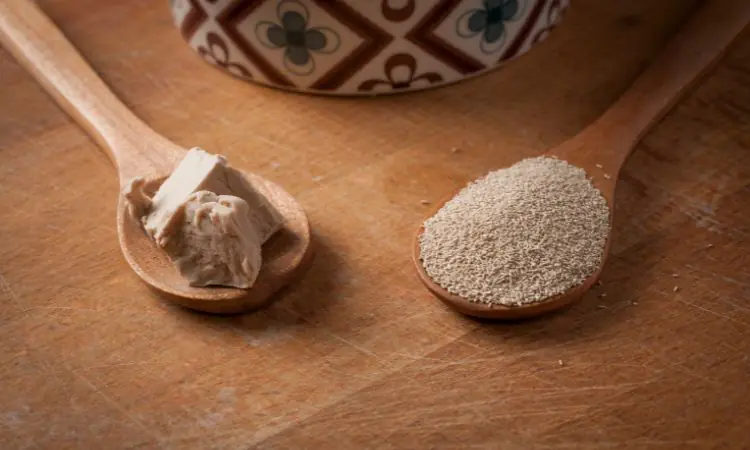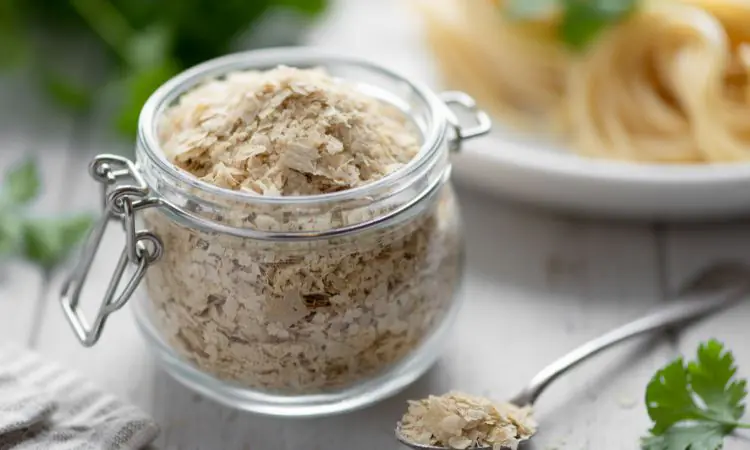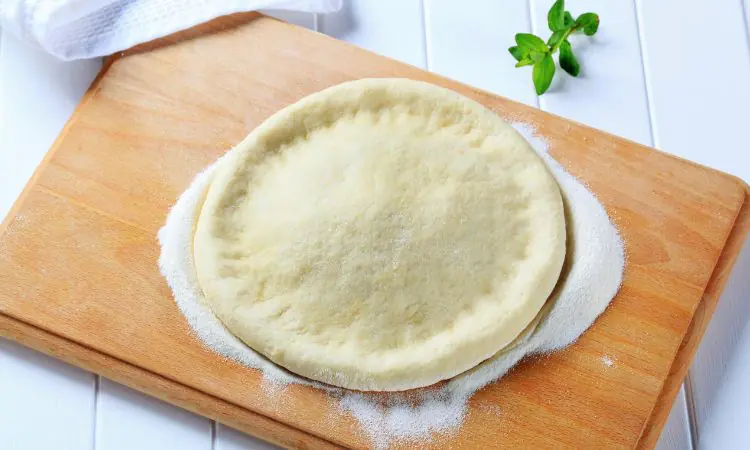What is the Difference Pizza Yeast vs Regular Yeast: Pizza yeast differs from regular yeast by containing dough relaxers, which make the dough easier to shape. Regular yeast lacks these additives and requires more time to rise.
Understanding the differences between pizza yeast and regular yeast is crucial for baking enthusiasts aiming to create the perfect pizza crust. Pizza yeast is a specialty product that streamlines the pizza-making process and is specifically designed to simplify dough handling and shaping.
The inclusion of dough relaxers helps pizza dough achieve the right texture without lengthy proofing times, making it ideal for a quick meal. Regular yeast, on the other hand, often used in various baking recipes, demands more patience, as the dough needs sufficient time to rise and develop its flavor. Knowing which yeast to choose can significantly affect the result of your homemade pizza or baked goods. Selecting the correct type of yeast is paramount for achieving the desired dough consistency and taste.

Pizza Yeast Vs. Regular Yeast: The Basics
Making the perfect pizza starts with the right ingredients. Yeast is essential. It makes pizza dough rise. But not all yeast is equal. Pizza yeast and regular yeast are different. In this section, we uncover the basics. Learn about each type to improve your pizza game.
Key Properties Of Yeast
Yeast is a living organism. It feeds on sugars. As it provides, it produces carbon dioxide and alcohol. This creates bubbles in the dough, making it rise. Types of yeast vary in flavor, increasing speed, and how they’re used. Let’s get into the specifics of pizza yeast and regular yeast.
Pizza Yeast: A Special Breed?
Pizza yeast is designed for making pizza. Its key features are:
- Rapid rise: Quick dough prep
- No proof: Mixes with flour, no waiting
- Easy to handle: Less sticky, easy to shape
It’s perfect for a fast pizza night. It creates a chewy crust with great flavor. No traditional dough-rising steps are needed.
Regular Yeast And Its Common Types
Regular yeast comes in many forms. Here are the three common types:
- Active dry yeast: Must dissolve in water before use
- Instant yeast: Mixes directly with dry ingredients
- Fresh yeast: A creamy cake crumbles into dough
These yeasts need time to work. The dough must rise, sometimes twice. Regular yeast is versatile and used in bread, rolls, and more.
Chemical Composition: What Sets Them Apart
When exploring the exciting world of baking, the tiny details make all the difference. Distinguishing pizza yeast from regular yeast hinges on their unique chemical compositions. Both types share a core function: they cause the dough to rise. Yet, the way they achieve this task varies. To fully understand their differences, let’s zoom in on their makeup.
Similarities In Yeast Makeup
At their core, pizza yeast and regular yeast are very similar. Both contain the same active ingredient: Saccharomyces cerevisiae. This is the microorganism that is responsible for the fermentation process. During fermentation, it consumes the sugars in the dough, releasing carbon dioxide, which causes the dough to expand and rise.
- Both pizza and regular yeasts are single-celled fungi. These organisms are vital in the baking process.
- They work best in warm and sugary environments, which is why they are perfect for bread and pizza dough.
Distinctive Ingredients In Pizza Yeast
Pizza yeast, however, packs a little extra. Unlike regular yeast, pizza yeast is specially designed for making pizza dough. It often contains dough conditioners and relaxers. These additives are the secret weapons that make pizza dough easy to shape and quick to rise.
| Regular Yeast | Pizza Yeast |
| No added conditioners | Contains dough conditioners |
| Needs more time to rise | Quick-rising formula |
The Role Of Additives
The additives in pizza yeast do more than speed up the rising process. They also affect texture and flavor. For instance, these additives can make the dough soft and stretchable, perfect for that classic pizza base. Such additives are not commonly found in regular yeast, as traditional bread recipes may not require these specific characteristics.
- Emulsifiers: Improve dough strength and gas retention.
- Reducing agents: Reduce elasticity, aiding in dough extensibility.
- Enzymes: Enhance dough condition, influencing the final product’s texture.
Performance In Dough: Understanding The Differences
When you make pizza or bread, yeast is critical. But not all yeasts are the same. Pizza yeast and regular yeast change how dough behaves. We’ll explore these differences. This helps you choose the best yeast for your cooking.
Rising Power Compared
Pizza yeast and regular yeast rise differently. Pizza yeast is designed to work fast. It makes dough rise quickly. Regular yeast acts slower. It needs more time to puff up the dough.
| Yeast Type | Rising Time |
| Pizza Yeast | Fast |
| Regular Yeast | Slower |
Impact On Texture And Flavor
The yeast type also changes the dough’s taste and feel. Pizza yeast makes a chewy crust. It’s great for pizza. Regular yeast gives a different flavor. It makes bread that is airy and light.
- Pizza Yeast: Chewy, classic pizza crust texture.
- Regular Yeast: Airy and light, nuanced flavor profile.
Dough Handling And Elasticity
Working with dough can be easy or challenging. Pizza yeast makes dough easy to shape. It’s because it’s less elastic. Regular yeast dough bounces back more. It’s stretchier than pizza yeast dough.
- Pizza yeast for easy-to-handle dough.
- Regular yeast for dough that’s more elastic and stretchy.

Culinary Implications: Choosing The Right Yeast
Understanding different types of yeast is vital to perfecting pizza dough. This choice impacts the dough’s flavor, texture, and rise. Each yeast type brings its unique characteristics to the table. Here, we explore how pizza yeast and regular yeast differ and their culinary implications.
Suitability For Different Types Of Pizza
Choosing the correct yeast for pizza dough matters. The dough’s rise, texture, and taste depend on it. Here’s how pizza yeast and regular yeast measure up.
- Pizza Yeast: Designed for a quick rise. Ideal for thin, New York-style pizzas.
- Regular Yeast: Takes longer to rise. Better for thick, chewy crusts like Chicago-style.
Adaptability In Recipes Beyond Pizza
Not all yeast stops at pizza. Many types work well in other recipes. Let’s dive into their adaptability.
| Type of Yeast | Adaptability |
| Pizza Yeast | Less versatile. Mainly for pizzas. |
| Regular Yeast | More versatile. Suitable for bread, rolls, and more. |
Expert Bakers’ Recommendations
Professional bakers have insights on using yeast correctly. Their recommendations help improve home-baked pizzas.
- Pizza Yeast: Use for a quick rise and easy handling. Great for beginners.
- Regular Yeast: Choose for flavor depth. Suits long fermentation times.
Practical Tips For Using Pizza And Regular Yeast
Practical Tips for Using Pizza and Regular Yeast can make or break your baking experience. Knowing the subtleties between pizza yeast and its regular counterpart will help create perfect dough every time. Use these tips to master your pizza and baking recipes.
Adjusting Hydration And Kneading Techniques
Pizza yeast is designed for chewy crusts and may not need much water. Regular yeast may require more liquid for the dough to rise correctly. Follow these guidelines:
- Check the package for hydration recommendations.
- Use cool water with regular yeast to control fermentation.
- Knead thoroughly, but don’t overdo it, as pizza dough will toughen.
Proofing Times And Temperatures
Pizza yeast often works faster than regular yeast. Proofing times vary:
| Type of Yeast | Room Temperature Proofing Time | Warm Environment Proofing Time |
| Pizza Yeast | About 30 minutes | Not recommended |
| Regular Yeast | 45 minutes to 1 hour | 30 to 45 minutes |
Always check dough size to ensure proper proofing.
Storage And Shelf Life Considerations
Proper storage ensures yeast remains active. Consider the following:
- Seal tightly and store in a cool, dry place.
- Refrigerate after opening to extend yeast viability.
- Check expiration dates, as active yeast is crucial.
Remember, fresh yeast performs best for superior flavor and rise.

Consumer Perspectives: Preferences And Perceptions
Pizza yeast and regular yeast seem interchangeable. However, preferences and perceptions vary widely. Understanding the subtleties of those who use yeast can enlighten choices for the perfect dough.
Home Bakers’ Experiences
Many home bakers choose conventional yeast for its accessibility. Leavening times and flavors with regular yeast differ, making experimentation popular among baking enthusiasts.
Experiences shared online highlight:
- Regular yeast’s versatility for various baked goods.
- The learning curve with pizza yeast for faster rise times.
- Need help finding pizza yeast in local grocery stores.
Commercial Pizza Makers’ Insights
In the fast-paced environment of pizza making, commercial makers often favor pizza yeast. Its designed qualities lead to consistent results and tailored textures.
| Pizza Yeast | Regular Yeast |
| Quick-rise formulas | Traditional, slower fermentation |
| Consistent dough handling | Adaptability for multiple recipes |
Trends In Yeast Consumption
Yeast consumption trends show a rise in artisan baking methods. Home bakers accept the challenge of using different yeasts to achieve professional-grade pizza at home.
Recent trends also indicate:
- Growth in organic and natural yeast varieties catering to health-conscious consumers.
- User-generated content guiding novice bakers toward pizza yeast for authentic Italian pizza experiences.
- Increased interest in sourdough starters as alternatives to commercial yeasts.
Frequently Asked Questions Of What Is The Difference Between Pizza Yeast And Regular Yeast
Can Pizza Yeast Be Used Like Regular Yeast?
Pizza yeast has instant yeast with dough relaxers to prevent snap-back when shaping. Regular yeast lacks these additives. It is practical for easy shaping, but not for traditional bread due to its non-traditional texture.
What Makes Pizza Yeast Different From Regular Yeast?
Pizza yeast is designed for quick and easy pizza dough with no rise time or proofing required, while regular yeast requires longer fermentation for flavor development in various breads.
Does Pizza Yeast Affect Dough Flavor Compared To Regular Yeast?
Yes, pizza yeast produces a neutral flavor, focusing on convenience, whereas regular yeast yields a more complex taste due to longer fermentation, enhancing the dough’s overall flavor.
Is Pizza Yeast Faster Than Regular Yeast In Dough Rising?
Pizza yeast allows for immediate dough rolling out without rising, whereas regular yeast dough needs at least one rise, making pizza yeast faster for pizza-making.
Conclusion
Understanding the distinctions between pizza yeast and regular yeast can elevate your home baking endeavors. Both variants achieve similar results, yet pizza yeast simplifies the process for specific dough types. Embrace these insights for your next culinary creation, and enjoy the tailor-made experience each yeast offers your palate.

As the author of the “Ultimate Pizza Guide: Recipes, Tips & Secrets Revealed,” I’m dedicated to sharing my love for pizza and empowering others to create delicious homemade pizzas with ease. Join me on a journey to uncover the secrets to perfecting your pizza game!


